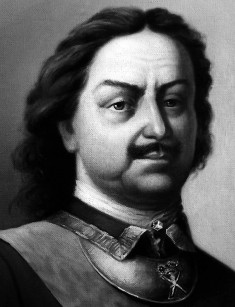
Peter I: biography
Peter I, for his merits, received the nickname Peter the Great. He is a very important person in Russian history. Peter 1 created the Russian Empire, so he was the last tsar of all Russia and the first Emperor of Russia. The son of tsar, the godson of tsar, and the brother of tsar - Peter was proclaimed the head of the country and at that moment the boy was only 10 years old. At the beginning, he had a formal coordinator, Ivan V, but from the age of 17 he already ruled independently, and in 1721 Peter I became the emperor.
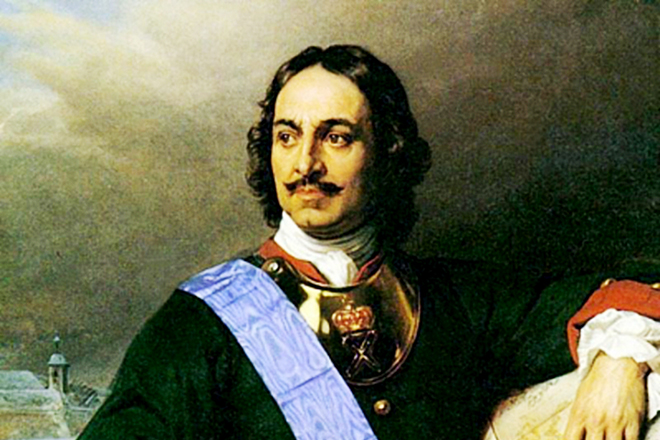
For Russia, the reign of Peter the Great was the time of large-scale reforms. He significantly expanded the territory of the country, built a beautiful city St. Petersburg, raised the economy, founded a network of metallurgical and glass factories, and also reduced the import of foreign goods to a minimum. In addition, Peter the Great was the first Russian ruler who adopted best ideas from Western countries. But all the reforms of Peter the Great were achieved due to violence against the population and the eradication of all dissent. Peter 1 still causes different opinions among historians.
Childhood and youth of Peter I
Biography of Peter I from the beginning meant his future reign, since he was born to the family of Tsar Alexei Mikhailovich Romanov and his wife Natalia Kirillovna Naryshkina. It is noteworthy that Peter the First was the 14th child of his father, but the first-born for his mother. Also it is worth noting that the name Peter was not traditional for both dynasties of his ancestors, so historians still cannot figure out why he got such a name.

The boy was only four years old when his father died. His elder brother and godfather, Fedor III Alekseevich, took the throne. He became a guardian of his brother and ordered to give him the best possible education. However, Peter the Great had big problems with education. He was always very curious, but just at that moment the Orthodox Church started a war against foreign influence and all Latin teachers were banished. Therefore, the boy was taught by Russian clerks, who did not have deep knowledge, and there were no Russian-language books of the proper level. As a result, Peter the First had a lean vocabulary and until the end of his life he was writing with mistakes.
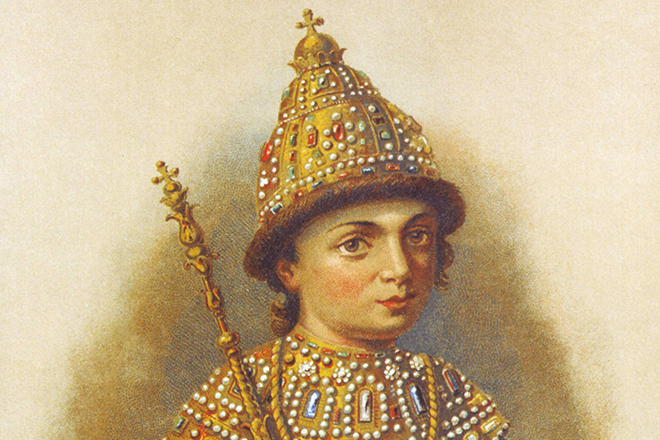
Tsar Fedor III ruled only six years and died because of poor health at young age. By tradition, the throne was occupied by another son of Tsar Alexei, Ivan, but he was constantly ill, so the Naryshkin family organized a palace coup and declared Peter I the successor of the Tsar. It was good for them, since the boy was a descendant of their clan. But the Naryshkins did not take into account, that the Miloslavskys family will organize the rebellion because of the violation of interests of Ivan. There was famous Streletsky rebellion in 1682, the result of which was the recognition of two kings - Ivan and Peter. The Armory Chamber of the Kremlin still has a double throne for king-brothers.
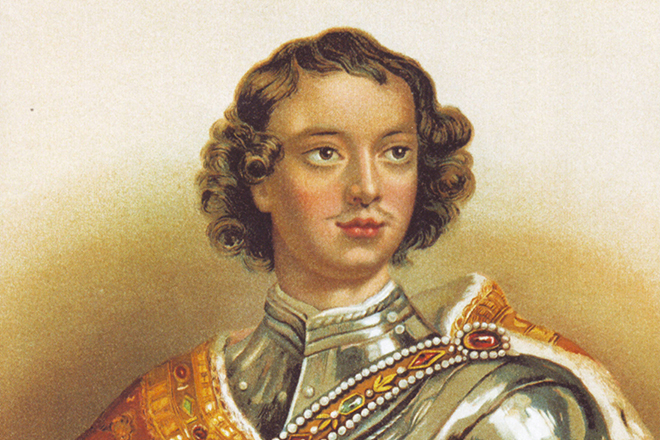
Peter’s favorite game was lessons with his army. And the soldiers of the prince were not toys. His peers dressed in uniform and marched through the streets of the city, while Peter the Great was a drummer in his regiment. Later, he even started his own artillery, also real. The comic army of Peter I was called the Preobrazhensky regiment, to which the Semenov regiment was later added. Besides them, the Tsar organized a comic fleet.
Tsar Peter I
When the young king was still a child, the elder sister, Princess Sophia, stood behind him as well as his mother Natalia Kirillovna and her relatives Naryshkins. In 1689, his brother Ivan V finally gave Peter all power, although he was nominally a co-king until he suddenly died at the age of 30. After the death of his mother, Tsar Peter the Great cancelled the guardianship of the Naryshkins and from that time we can speak of Peter the First as an independent ruler.

He continued military operations in the Crimea against the Ottoman Empire, made a series of Azov campaigns, which resulted in the capture of the fortress of Azov. To strengthen the southern borders, the king built the port of Taganrog, but Russia still did not have a good fleet. So the final victory was not achieved. Building of ships and training of young noblemen abroad began. And the king learned the art of building a fleet. He even worked as a carpenter during the construction of the ship "Peter and Paul."
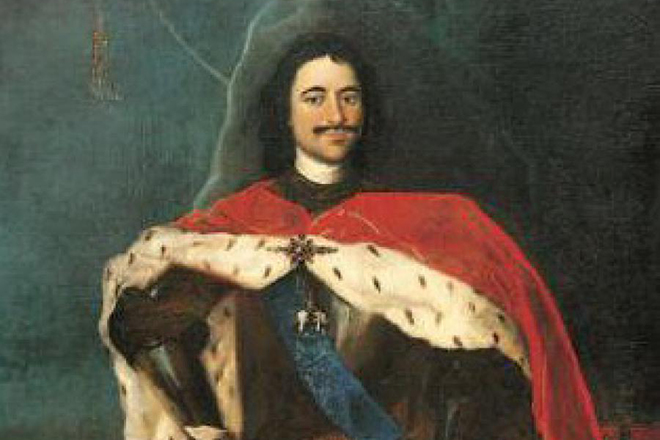
While Peter the Great was preparing to make reforms in the country and studied the technical and economic progress of the leading European countries, against him a conspiracy was created. And at the head was the first wife of the king. After suppressing the Streltsy rebellion, Peter the First decided to reorient military operations. He signs a peace agreement with the Ottoman Empire and begins a war against Sweden. His troops captured the Noteburg Nienschanz fortress at the Neva delta, where the king decided to found the city St. Petersburg. And put the Russian naval base on the Kronstadt Island.
The Wars of Peter the Great
These conquests allowed him to open the way to the Baltic Sea, which later received the symbolic name "Window to Europe". Later Eastern Baltic joined to Russia and in 1709 at the legendary Poltava Battle the Swedes were defeated completely. And it is important to note: Peter the First unlike many kings did not sit out in fortresses, but personally was in the head of the troops on the battlefield. In the Poltava Battle, his hat was shot, so he really risked his own life.

After the defeat of the Swedes near Poltava, King Charles XII took refuge under the protection of the Turks in Bendery, which was the part of the Ottoman Empire, and today is located in Moldova. With the help of the Crimean Tatars and the Zaporozhye Cossacks, he tried to change the situation on the southern border of Russia. Trying to deport Charles, Peter the First, on the contrary, forced the Ottoman Sultan to begin the Russian-Turkish war. Russia was in a situation when it was necessary to wage war on three fronts. On the border with Moldova the king was surrounded and agreed to sign peace with the Turks, giving them back the Azov fortress and access to the Azov Sea.

In addition to the Russian-Turkish and northern wars, Peter the Great went to the east. Thanks to his expeditions, Omsk, Ust-Kamenogorsk and Semipalatinsk were founded, later Kamchatka joined Russia. The king wanted to make campaigns to North America and India, but failed to realize these ideas. But he made the so-called Caspian campaign against Persia, during which he conquered Baku, Resht, Astrabad, Derbent, as well as other Iranian and Caucasian fortresses. But after the death of Peter the Great, most of these territories were lost, as the new government considered the region not promising, and paying to the garrison in those conditions was too expansive.
Reforms of Peter I
Due to the fact that the territory of Russia was expanded considerably, Peter managed to reorganize the country from the kingdom into the empire, and since 1721 Peter I became the emperor. Such reform of Peter I as the changes in the army helped him to achieve great military victories. But no less important were such innovations as the transition of the church under the subordination of the emperor, as well as the development of industry and trading. Emperor Peter the Great understood that the country needed education and wanted change the outdated way of life. On the one hand, his tax on wearing a beard was considered as tyranny, but at the same time the career of nobleman depended on their level of education.

The first Russian newspaper was founded thanks to Peter and many translations of foreign books appeared. Artillery, engineering, medical, marine and mountain schools were opened, as well as the first gymnasium in the country. And now, general education schools could be visited not only by the children of noble men, but also by the children of soldiers. He really wanted to create a compulsory primary school, but he did not manage to carry out this plan. It is important to note that the reforms of Peter the Great affected not only the economy and politics. He financed the education of talented artists, introduced a new Julian calendar, and tried to change the position of women by prohibiting forced marriages. He also raised the dignity of his people, obliging them not to kneel even before the king and use full names, rather than calling themselves "Senka" or "Ivashka" like before.

In general, the reforms of Peter the Great changed the values of the nobility, which can be considered a huge advantage, but the gap between the nobility and the people has increased many times and it was not limited only by finance and title. The main disadvantage of Peter’s transformations is considered the violent method he used. In fact, it was a struggle of despotism with uneducated people, and Peter hoped to awake awareness in people. The construction of St. Petersburg was made in difficult conditions. Many craftsmen gave up their work, and the king imprisoned their families, until men returned.

Not everyone liked the method of Peter’s the Great governing. The tsar founded Transfiguration order, the organization of political investigation and the court, which later grew into the infamous Secret Chancellery. The most unpopular decrees in this context were a ban on writing in a closed room, as well as a ban on non-denunciation. The violation of both these decrees was punishable by death. In this way, Peter the Great struggled with conspiracies and palace coups.
Personal life
In his youth, Tsar Peter I liked to visit the German settlement, where he not only became interested in foreign life, for example, he learned to dance, smoke and communicate in a Western manner, but also fell in love with the German girl Anna Mons. His mother was very worried about this relationship, so when Peter reached the age of 17, she insisted on his wedding with Evdokia Lopukhina. However, they did not have a normal family life: shortly after the wedding, Peter left his wife and visited her only to prevent rumors of a certain kind.

Tsar Peter I and his wife had three sons: Alexei, Alexander and Pavel, but the last two died in infancy. The eldest son of Peter the Great was supposed to become his heir, but since Evdokia in 1698 unsuccessfully tried to overthrow her husband from the throne in order to transfer the crown to her son and was imprisoned in a monastery, Alexei was forced to go abroad. He never approved the reforms of his father; he thought he is a tyrant and planned to overthrow the parent. However, in 1717, a young man was arrested and taken into custody in the Peter and Paul Fortress, and the next summer he was sentenced to death. Before the execution, it did not happen, because soon Alexei died in prison under unclear circumstances.
Few years after the divorce with his first wife, Peter had a mistress the 19-year-old Marta Skavronskaya, whom the Russian troops captured as a military prize. She gave birth to his eleven children; half of them were born even before the wedding. The wedding was held in February 1712 after the adoption of a woman of Orthodoxy, thanks to which she became Catherine Alexeevna, later known as Empress Catherine I. Among the children of Peter and Catherine - the future Empress Elizabeth I and Anna, the mother of Peter III, the rest died in childhood. It is interesting that the second wife of Peter the Great was the only person in his life who knew how to calm his violent temper even in moments of anger.

Despite the fact that his wife accompanied the emperor in all campaigns, he fell in love with the young Maria Cantemir, the daughter of the former Moldovan ruler, Prince Dmitry Konstantinovich. Maria remained the favorite of Peter the Great until the end of his life. It is worth mentioning the height of Peter I. Even for our contemporaries, more than two-meter-tall man seems very high. But in the time of Peter I his 203 centimeters seemed completely improbable. According to the chronicles, when the Tsar and Emperor Peter the Great walked through the crowd, his head was above people.
Death of Peter I
Compared with his elder brothers Peter the First seemed quite healthy. But in fact, almost all his life he had terrible headaches, and in the last years of the reign Peter I suffered from kidney stone disease. The attacks were intensified after the emperor, together with ordinary soldiers, pulled out the boat, but he tried not to pay attention to the disease.

At the end of January, 1725, the ruler could no longer bear the pain and lived in his Winter Palace. After he couldn’t even to scream, but only groaned, people realized that Peter the First was dying. Peter the Great died in terrible agony. The official cause of his death, doctors called pneumonia, but later the doctors had strong doubts about this verdict. The autopsy showed a terrible inflammation of the bladder, which had already developed into gangrene. Peter the Great is buried in the cathedral at the Peter and Paul Fortress in St. Petersburg, and the heir of the throne was his wife, Empress Catherine I.





